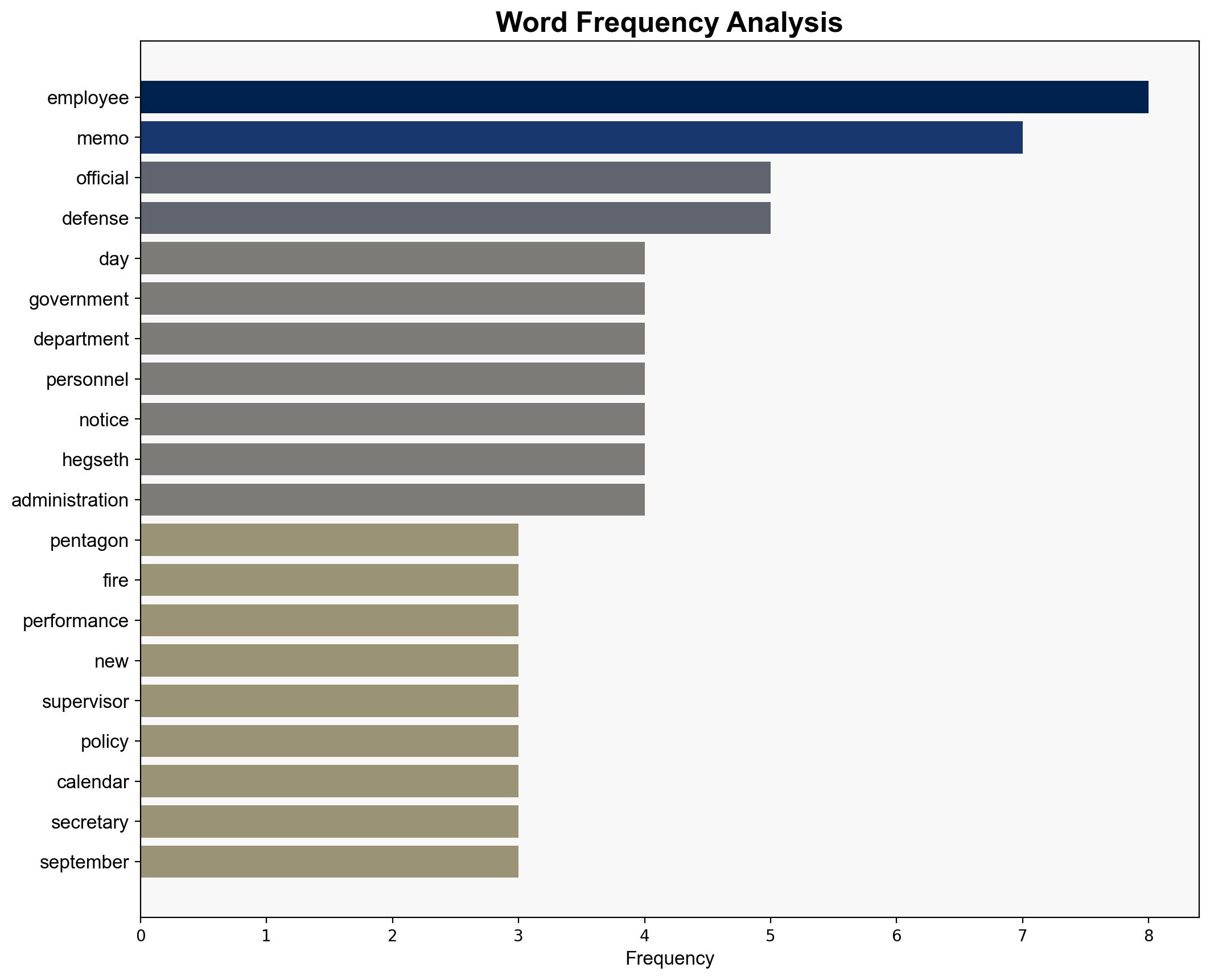Defense Department takes steps to fire civilian employees with ‘speed and conviction’ – NBC News
Published on: 2025-10-29
Intelligence Report: Defense Department takes steps to fire civilian employees with ‘speed and conviction’ – NBC News
1. BLUF (Bottom Line Up Front)
The most supported hypothesis is that the Defense Department’s new policy aims to streamline the removal of underperforming employees to enhance operational efficiency and align with broader administrative goals. Confidence level: Moderate. Recommended action: Monitor implementation and potential legal challenges, while assessing impacts on workforce morale and operational capability.
2. Competing Hypotheses
1. **Hypothesis A**: The policy is primarily intended to improve efficiency within the Defense Department by expediting the removal of underperforming employees.
2. **Hypothesis B**: The policy is a strategic move to align the workforce with the current administration’s political and ideological goals, potentially targeting employees perceived as unsupportive.
Using Analysis of Competing Hypotheses (ACH), Hypothesis A is better supported by the explicit focus on performance metrics and procedural efficiency outlined in the memo. Hypothesis B is less supported due to lack of direct evidence of political targeting, though it remains plausible given the context of broader administrative actions.
3. Key Assumptions and Red Flags
– **Assumptions**: The policy will be implemented uniformly and fairly, focusing solely on performance. Legal frameworks will support the expedited processes.
– **Red Flags**: Potential for misuse of the policy for political purposes. Legal challenges could arise, as indicated by previous judicial interventions in related administrative actions.
– **Blind Spots**: Lack of detailed data on how performance metrics are defined and measured, and the absence of feedback from affected employees.
4. Implications and Strategic Risks
– **Operational Risks**: Potential short-term disruption in operations due to rapid personnel changes.
– **Legal Risks**: Increased likelihood of legal challenges and union disputes, which could delay implementation.
– **Geopolitical Risks**: Minimal direct impact, but internal instability could be exploited by adversaries.
– **Psychological Risks**: Possible decline in workforce morale and trust in leadership, affecting long-term productivity.
5. Recommendations and Outlook
- Conduct regular reviews of the policy’s implementation to ensure adherence to legal standards and fairness.
- Engage with employee representatives to mitigate morale issues and ensure transparency.
- Scenario-based projections:
- Best Case: Improved efficiency and morale with minimal legal challenges.
- Worst Case: Significant legal setbacks and workforce unrest leading to operational inefficiencies.
- Most Likely: Gradual improvement in efficiency with some legal and morale challenges.
6. Key Individuals and Entities
– Anthony Tata
– Pete Hegseth
– Charlie Kirk
– Gen. Brown
– Adm. Lisa Franchetti
7. Thematic Tags
national security threats, workforce management, administrative policy, legal challenges





